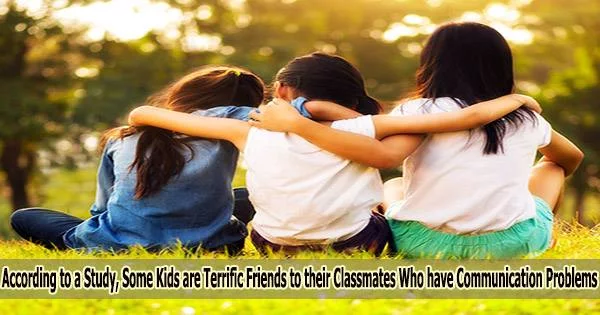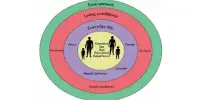A study demonstrates that kids can be excellent friends to their peers who have difficulty speaking and expressing themselves.
Linguistic barriers are not necessarily a barrier to relationships in the classroom, researchers have discovered, with children finding methods to engage socially even when a student has communication difficulties. They can even help them make more friends.
According to researchers, instructors can take inspiration from these ways that kids make their friends feel at home as they create inclusive classrooms.
A typical childhood condition that affects language development is language disorder. Most children with LD are included in mainstream classrooms.
The study was carried out by Lenka Janik Blaskova, from the University of Exeter and Jenny Gibson, from the University of Cambridge.
In the United Kingdom and the Republic of Ireland, researchers conducted interviews with nine children with language disorders who were in regular classrooms and who were between the ages of six and eight. They also interviewed nine of their friends.
Friends didn’t recognize their peers had language disorder and did not report limited language as a barrier in their interactions. Those whose friends attended enhanced provision said language difficulties substantially impeded their interactions, a reflection of the fact they would have more severe difficulties.
Lenka Janik Blaskova
The research took place throughout 2019 and the interviews were art-based. Researchers also collected data from observations, interviews, linguistic and sociometric assessments.
Friends of kids with language disorders who attended the expanded program frequently displayed an inclusive perspective and had their own methods for getting around potential communication hurdles. Friends who were enrolled in full-time mainstream classes did not mention having communication issues when speaking with a peer who had a language disability.
Dr. Blaskova said, “Educational practice should build on those inclusion strategies that children find natural and consider the importance of teaching all children about adjustments that can support inclusion of those with communication difficulties.”
Most of the study’s participants who had linguistic disorders shared a similar social position with others, while some had been rejected or neglected by others.
According to the statistics, children who attend enhanced provision may be at a disadvantage. Researchers advise further study to see whether mainstream settings can have a good impact on the peer interactions of children with LD.
Dr. Blaskova said, “Friends didn’t recognize their peers had language disorder and did not report limited language as a barrier in their interactions. Those whose friends attended enhanced provision said language difficulties substantially impeded their interactions, a reflection of the fact they would have more severe difficulties.”
“Friends tried to find ways to overcome any language barriers and had an inclusive mindset. They adjusted their own communication or stayed talking even when they didn’t understand those with LD. Some even invited others to play with their friend with language disorder. These strategies seemed natural to children and researchers say teachers could learn from how they formed bonds in order to make classrooms more inclusive.”
“Making children with LD aware that their peers can struggle with certain aspects of their communication could help children with LD understand some peer reactions. We recognize this is a small sample size, but this research shows inclusion can be handled more explicitly by teachers. Placing a child with language disorder in a classroom without acknowledging their specific needs to peers may not be enough. Children encounter communication breakdowns so it can be useful to make their peers understand these difficulties. Finding balance in revealing sufficient information without making children with LD feel uncomfortable will require consulting carers, special education needs coordinators, and even children with LD themselves.”
The study is published in the journal Child Language Teaching and Therapy.
















